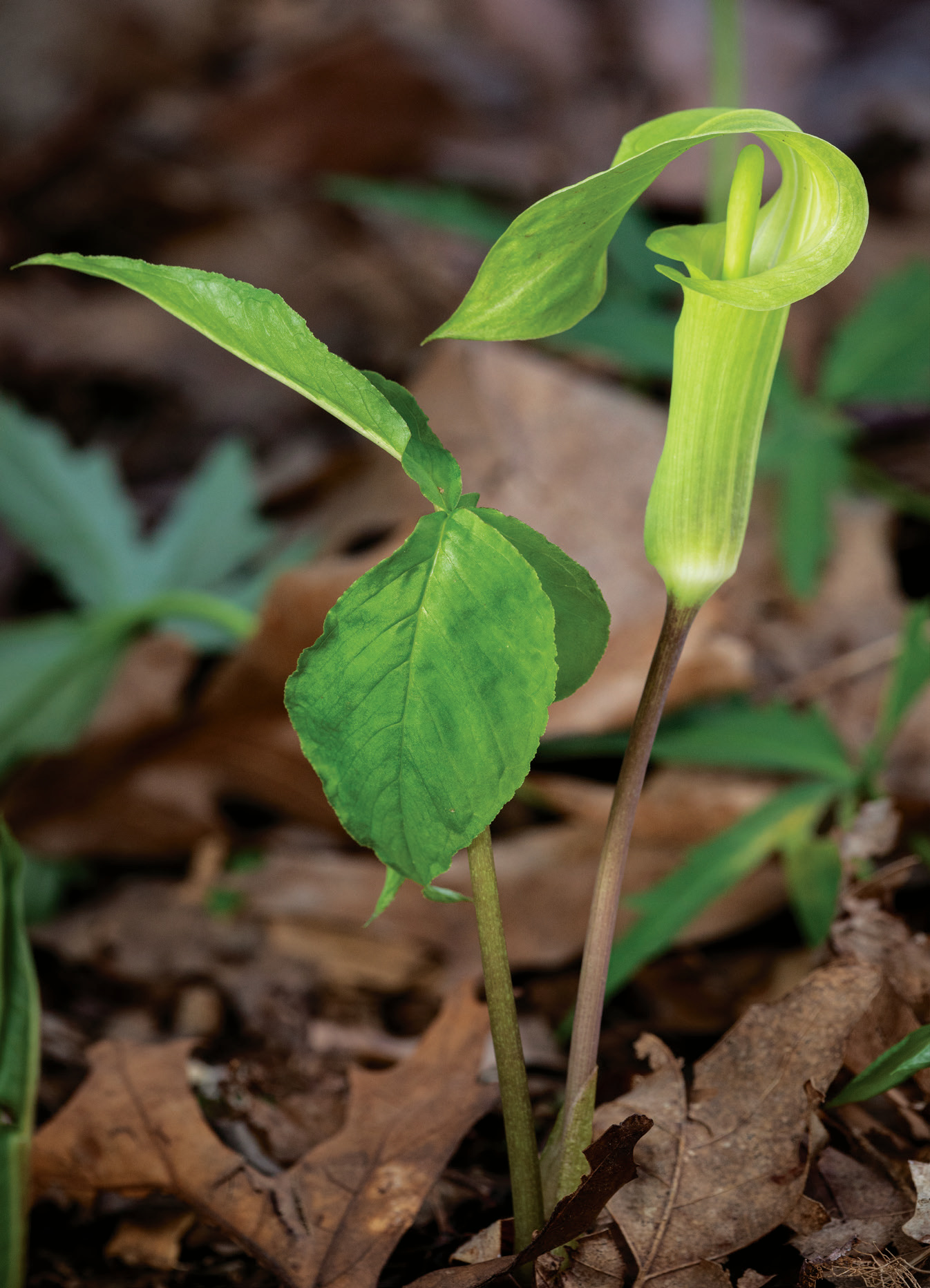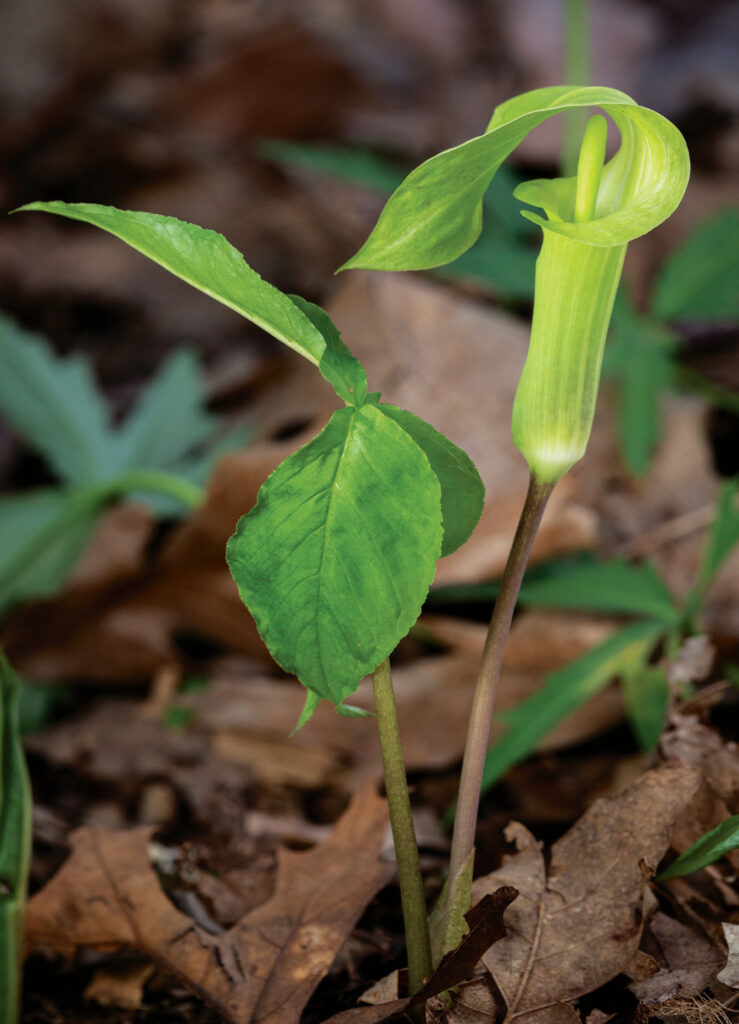Spring wildflowers will be blooming soon across Tennessee. I always look forward to this time of year when the forest floor comes alive with countless vibrant points of colors.
Every shade of green becomes visible as plants emerge from beneath the layers of last fall’s leaves that have served as ground cover and shelter through the winter. As blooms begin to appear, every shade of French impressionist Claude Monet’s palette seems to be represented.
Though I have frequently photographed many varieties of common wildflowers — including spring beauties, dwarf larkspur, Dutchman’s breeches and trillium — there are a few that always stop me in my tracks when I see them.
The jack-in-the-pulpit is one such wildflower. Though they aren’t particularly rare, I rarely see them. In all my miles of hiking Tennessee trails, I have run across fewer than 10 in pristine condition. This one was also in a perfect spot alongside the trail.
Standing about a foot tall, this specimen was on the side of a steep hill in an area with speckled sunlight filtering through the treetops. I used a tripod and macro lens to get eye level with the bloom. I also used a small silver reflector to bounce some light under the cap of the bloom to illuminate the spadix, or “jack,” inside the spathe, or “pulpit.”
With some patience and the right timing, I was able to get a sharp image of this plant in between the slight gusts of wind that were present. Particularly with small subjects like wildflowers, a breeze can easily ruin the day.
The closer you are and the larger the lens, the more movement will affect your image. If you can see the plant moving, it’s going to be difficult to get a sharp image.
As a nature photographer, I always adhere to the rule to “take only photographs and leave only footsteps.” Staying on existing trails will help prevent you from accidentally crushing numerous plants on your way to that perfect one.
I can’t wait to get out this spring to see what I find this year. You never know what nature will offer on any given day.




